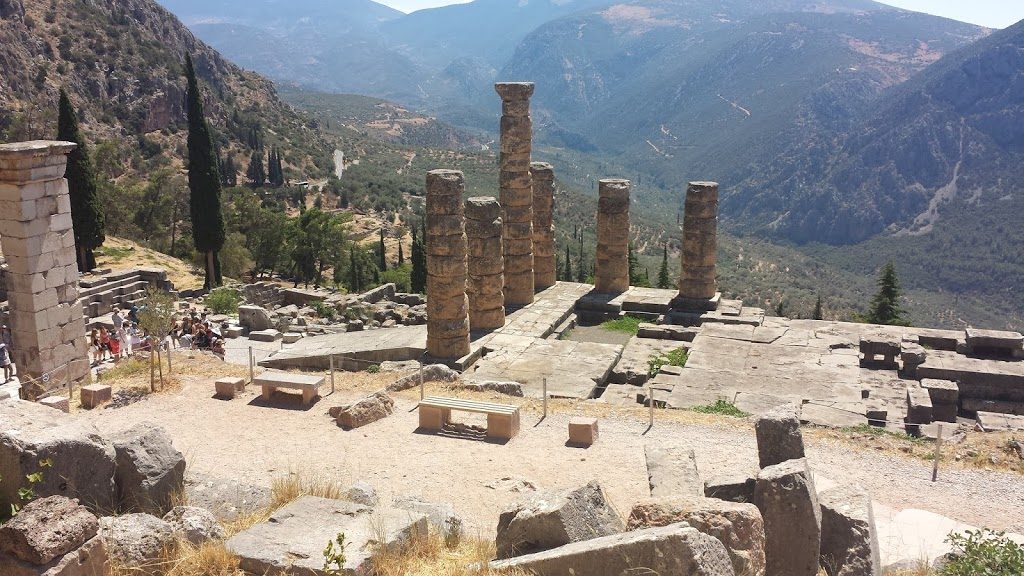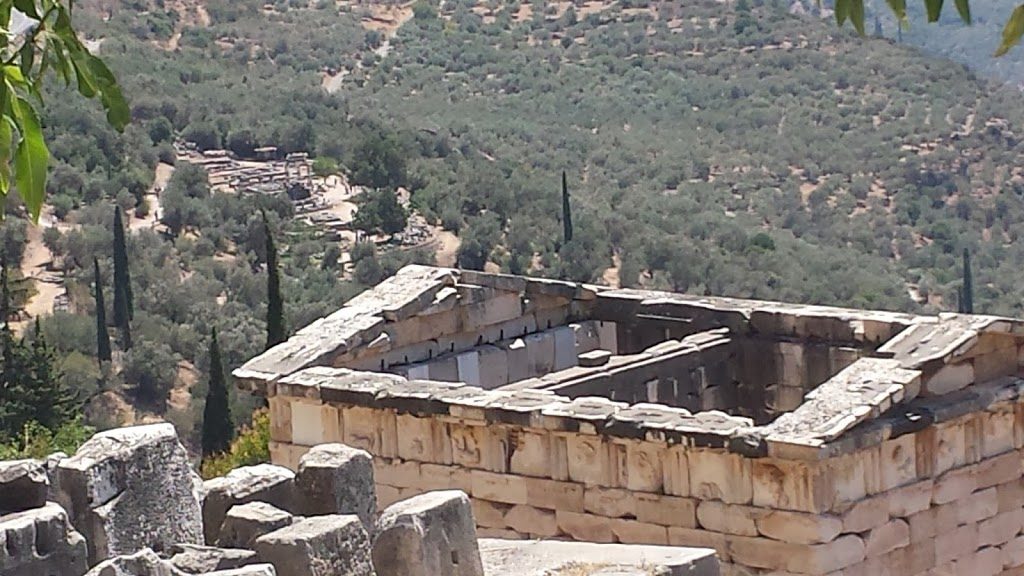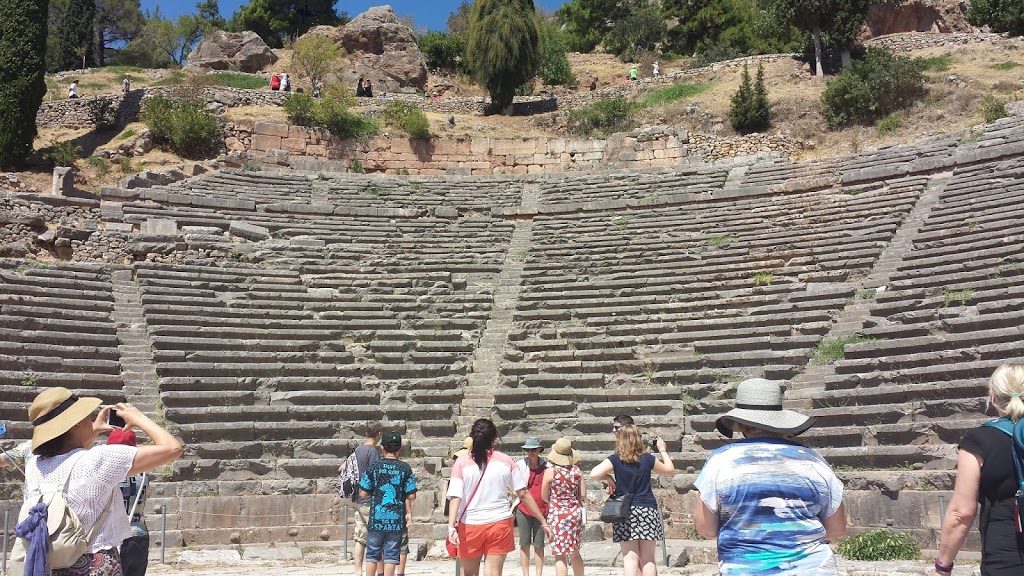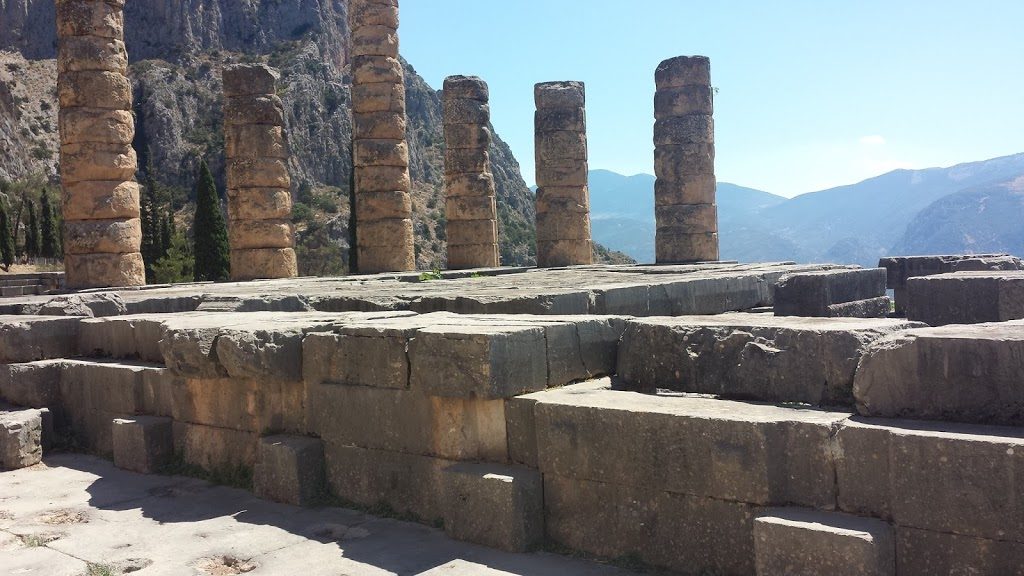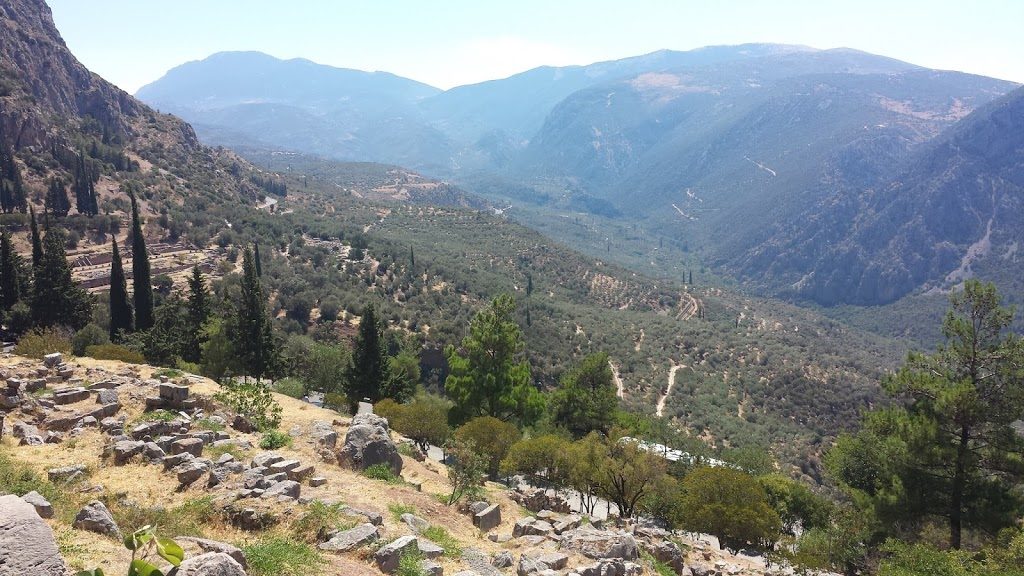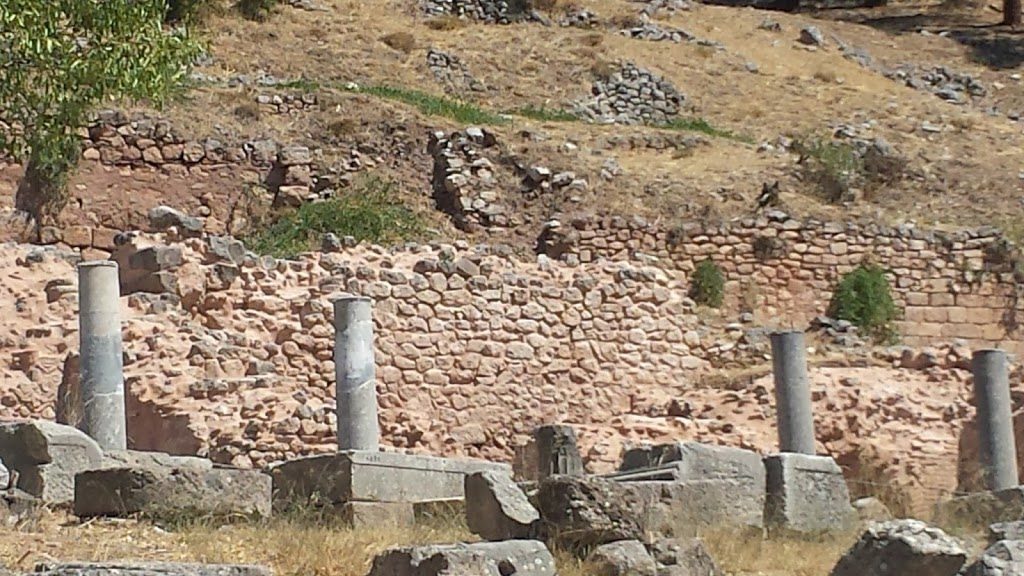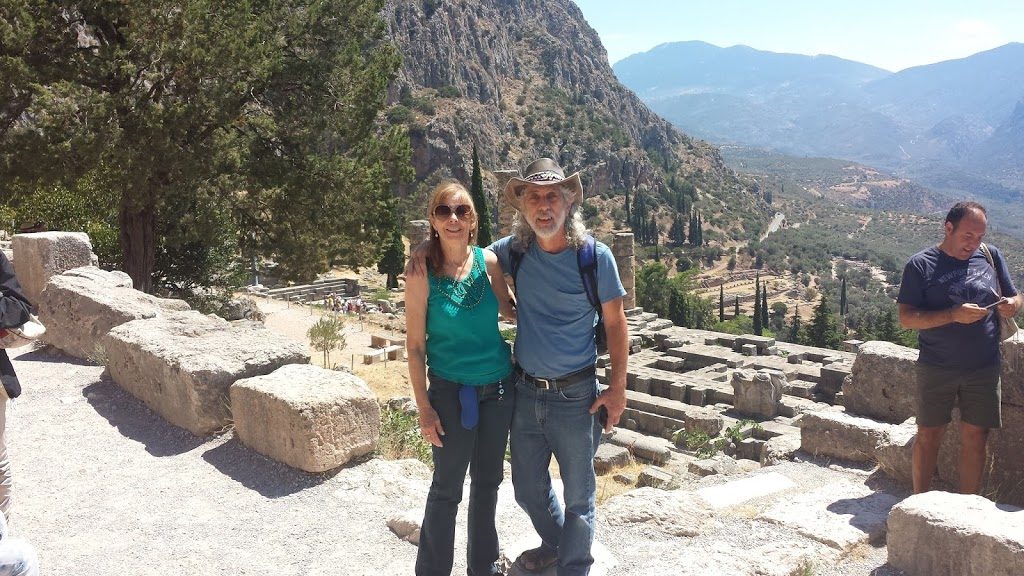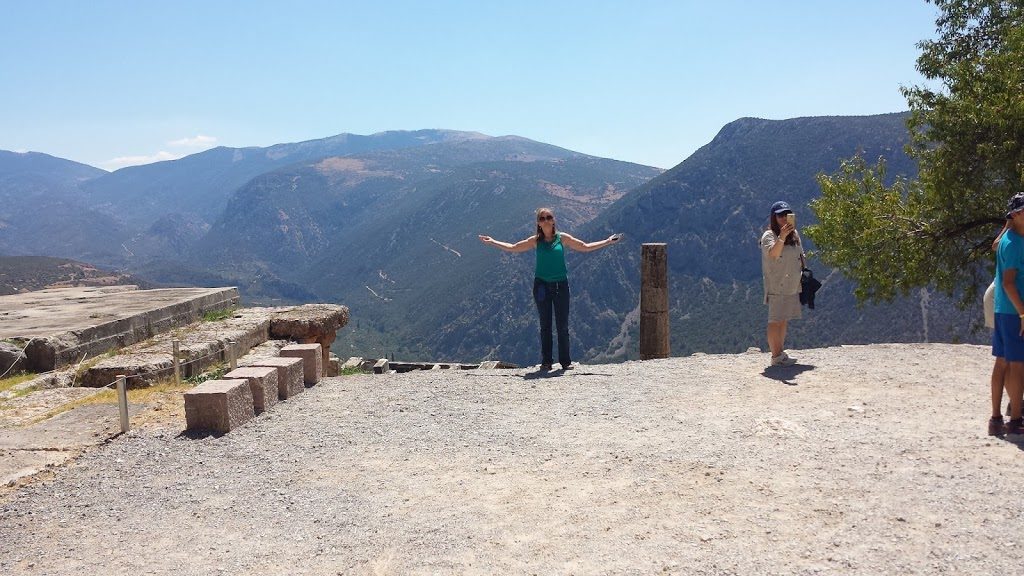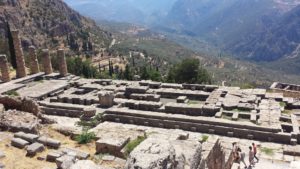
Almost everyone has heard at least a little bit about the Oracle of Delphi. This ancient priestess who prophesied in the name of the Greek god Apollo is mentioned at least briefly in most history books. But the mentions in the history books don’t do justice to the magnificent, sprawling temple complex, situated high on the side of a mountain, where the Oracle made her cryptic pronouncements. You simply have to be there to grasp its true grandeur and to feel its mystical vibration.
First, though, pronunciation. Many of us have gone through our lives pronouncing the location as “delf-eye.” The Greeks, however, pronounce it as “delf-ee.” Hearing this caused us to change our pronunciation to the way the Greeks pronounce it. They should know, after all — it’s their language. (You may, of course, pronounce the word however you like. This is just for your information.)
The ancient temple complex at Delphi has existed as a religious center in oneform or another since as early as the 14th century BC. The heyday of the site, and of the Oracle, was from around 800 BC through around 400 AD — over 1,000 years. The Oracle herself was not a single person, but instead a series of women who held the position as priestess/prophet/oracle in the temple of Apollo.
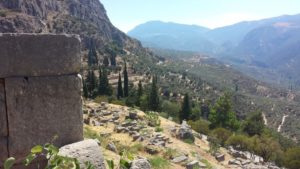
The complex itself sits nearly 2,000 feet up the side of Mt. Parnassus in the southern part of Greece, about a 2-1/2 hour drive from Athens. The site is spread over many different levels, following the slope of the mountain. You will need to be in fairly decent physical shape to visit, as there is a lot of climbing involved. Indeed, as you stand among the ruins and look down the mountainside, you wonder how the ancient people actually got there, especially those coming from a great distance. The roads were not what they are today, of course, and the mountainside is rough and steep. It could not have been an easy journey, and those people must have really wanted to consult the Oracle to go through it.
We visited Delphi in August, 2016, so we had summer heat to deal with as well — the midday temperature was in the 90s. The air-conditioned tour bus only drops you at the entrance. After that, you trek up the slope on your own. The walking paths are good, but it can still be some work.
The centerpiece of the complex is what remains of the once-great temple of Apollo. Little more than a ruin today, with only a few columns still left standing, the temple remains impressive nonetheless, with a scale that reflects the grandeur of the god.
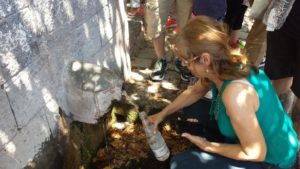
In addition to the temple, the site contains numerous “treasury houses” (buildings where offerings to the god were stored), an outdoor theater, a large stadium, and numerous other features. There is also what our tour guide referred to as a “fountain of youth” — an ancient spring which since antiquity has been said to provide magical waters. You can fill your water bottles from the spring so that you, too, can reap its benefits. A more-modern addition at Delphi is a museum containing many artifacts from the site.

It is at the side of Apollo’s temple, over a crevice in the earth, that the Oracle sat when she delivered her messages as the mouthpiece of the god. Even today, this location feels mystically “charged.” When the crowd of tourists wanders off and you stand quietly beside the stone platforms alone, you can sense the presence of higher powers and perhaps gain insight into some greater wisdom. Apollo, via the Oracle, may even speak to you, provided you are open to hearing what he has to say.
Our tour guide, Anastasia, was quite knowledgeable about Delphi and its history. But she pooh-poohed the mystical background and vibration of the site. Indeed, she went so far as to say that the entire complex was constructed as a massive con game concocted by the temple priests for the sole purpose of separating the pilgrims to Delphi from their money!
This seems to be a rather extreme interpretation. Even if you yourself don’t believe in the ancient Greek gods and the mystic powers of the Oracle, most people would concede that the Oracle, the temple priests, and those asking for advice all actually did believe in these powers. To cynically claim that it was all just a con game and that not even the priests believed it is… well, a bit much, it seems.
For our part, we did feel and connect with the mystic vibration of the site. Apollo speaks, if you are open to listen. And the two maxims which were carved into the temple in ancient times — “Know thyself” and “Nothing in excess” — are still worth pondering and following.
Here are some interesting tours of Delphi from Viator.com.
More photos from our trip to Delphi:
